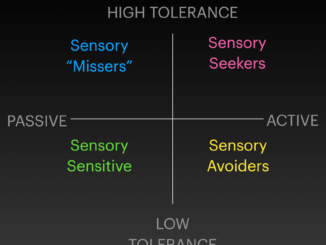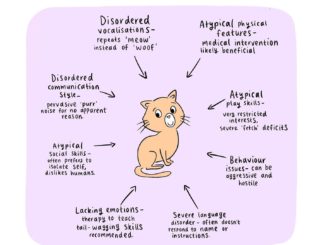One way that I sometimes explain the concept of neurodivergence — that autism, or ADHD* are different wirings of the brain, without being something “wrong” with the brain — to children (or sometimes to their adults!) is by making an analogy to operating systems: for example, an iPhone versus an Android. Many kids above a certain age and virtually all adults can usually understand this as a starting point.
As with all analogies, this one is not perfect and there are flaws in it. However, these are some of the ways that I can explain it with an analogy.
An iPhone and an Android may be able to do some of the same things — they may have some of the same apps. However, if you were trying to write an app for an iPhone and then write the same app for an Android, you would actually have to use two different coding languages to make the apps do the same thing. The end result looks like it’s the same, but it’s built on two different sets of instructions.
In the same way, people with one type of brain might be able to do the same things as people with another type of brain — an ADHD brain; an Autistic brain. They could both love writing, or hate writing; they could both love math, or hate math; they could both grow up and become an engineer or a plumber or a nurse or a stay-at-home parent or a pilot or a teacher or a cashier; they could both grow up and choose to live independently, or with a roommate, or with a romantic partner, or with a few friends, or with some other kind of living arrangement; they could both enjoy video games or skateboarding or playing the guitar or whatever else things people think of in a whole entire life.
But the “code” underneath that in their brain might be different. They might have different things that could help them be successful in something like math or writing, or someday having a job. They might have different things in their brain that are making it hard for them to do math or writing or having a particular job.
If you want the iPhone to be able to successfully do something, you might have to input completely different code than if you wanted the Android to be able to successfully do something. That code might be similar, or it might be completely different in every way.
For one kid, telling them to sit still with their hands in their lap and look at their teacher might have the end result of them hearing what their teacher says and remembering it better.
For another kid, telling them to sit still with their hands in their lap and look at their teacher might result in their whole entire focus and energy of their brain going toward not moving, not fidgeting, not wiggling, and staring at their teacher’s face…with the side effect that their brain shuts off the “listening” and “remembering” functions.
So putting in the exact same “code” made one brain have the desired end result, but it didn’t work for the second brain. The second brain needed different code to have that end result.
Then there are some apps you can get on iPhone, that you can’t get at all on Android. And there are some apps you can get on Android, that you can’t get at all on iPhone. There will always be some differences that can’t be forced to be exactly identical, or exactly indistinguishable. Some people will naturally prefer one over the other, even though they can learn how to understand the other, too.
The phones also have different things they’re better at, or different challenges. One type of phone might be better for taking pictures, making art, or being more customizable, while the other is more straightforward and more predictable. One phone might have more memory storage than another. One phone might run more slowly, or might run out of battery—energy—faster than another phone does. Many types of phones have different types of chargers they need to recharge—the same thing that recharges another person, might not recharge them.
All of this is not usually 1 conversation that I have with a child. (It might be with adults—usually not this long, but hitting on the highlights all in one go, because I usually don’t have recurrent meetings with the adults.) This is an analogy that I can come back to over and over as the child is recognizing and verbalizing things that are going on in their own brain and body.
*There are more neurodivergences in the world than just autism and ADHD! Some examples are what are currently termed “mood disorders” like depression, anxiety, and bipolar disorder, or what are currently termed “personality disorders” like borderline or antisocial personality disorder, etc. There are other examples, too, such as people who have had strokes or traumatic brain injuries. However, in my work with younger kids, I am usually not encountering kids with those types of diagnoses, or not as their primary diagnosis. So, I wrote this post with an emphasis on the types of neurodivergence that I am typically personally talking about.



